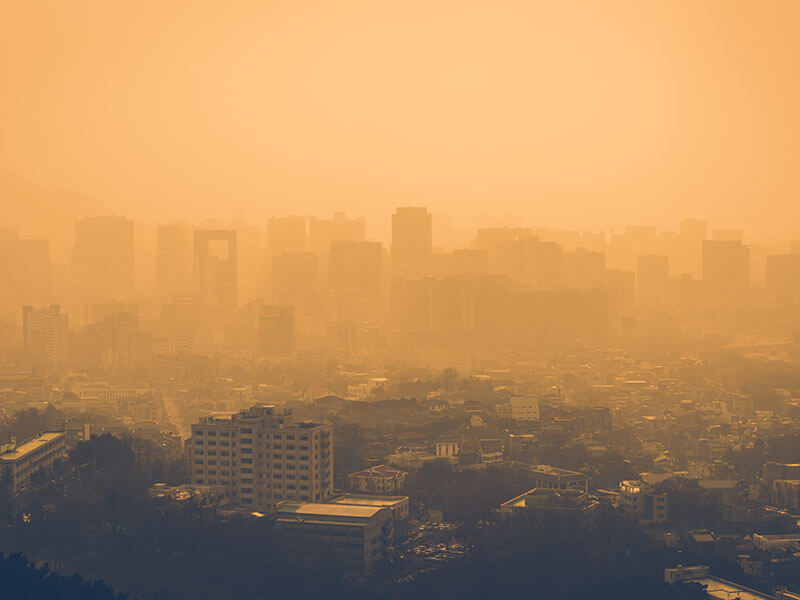In the COVID-19 era, indoor air quality has become a hot button topic. There are a lot of interesting facts about indoor air quality that you might not know, but one of the most surprising facts is that your indoor air quality was impacting you long before COVID.
As the world’s clean air experts, we specialize in keeping the air in cleanrooms extra clean. But we also care about the air you’re breathing in your home and workspace. So here are 10 facts about indoor air quality you might have known.
1.Indoor Air Quality Is Considered One Of The EPA’s Top 5 Health Threats
Indoor air quality is consistently ranked by the Environmental Protection Agency (EPA) as one of the top health threats to the public. This is due to the number of pollutants we find indoors and the amount of time we spend inside.
2.Schools Have Some Of The Worst Air Quality
With the number of students, the size of classrooms, and the number of products used in classrooms, it comes as no surprise that the EPA is concerned about the indoor air quality in schools. This is especially true as we try to reopen and send kids back to school.
3.Wood Smoke Can Hurt Your Immune System
Wood heat is a popular heating source for many, but the pollutants from wood smoke can irritate your lungs and hurt your immune system, according to the EPA. They even note that it can make you more at risk for the SARS-CoV-2 virus, which causes COVID-19. So if you are using wood heat in your homes, you need to be focusing on the quality of air in your home.
4.Pet Dander Can Stick To Your Furniture
Notice that your pets are shedding? Even if you’re not allergic to pet dander, it can still impact the quality of the air in your home (and, if you’re working from home, your office space). When your pet sheds, the dander will float through the air and then stick to the furniture. Since it stays in the home for so long, it can continually impact your air quality.
5.Indoor Air Quality Can Be 2 to 5 Times More Polluted Than Outside Air
Right now, we’re spending a lot of time indoors because it’s safer and more responsible than going into public. But the reality is that indoor air quality can be pretty bad for us. The EPA states that indoor air quality can be 2 to 5 times more polluted than outdoor air quality. That’s a lot of contaminants to be breathing in!
6.Pediatric Asthma Rates Have Gone Up 72%
In recent years, pediatric asthma rates have skyrocketed. And scientists are connecting it to indoor air quality. Children are particularly at risk when it comes to indoor air quality as their respiratory systems are still developing.
A 2020 study monitored 16 households that had children with asthma for a week before intervening. They then improved the air quality in the home and monitored them for another 7 days. They noticed a start improvement in the childrens’ quality of life.
7.Breathing Recycled Air Can Give You A Cough And Other Symptoms
Breathing recycled air with pollutants can give you physical symptoms. These include dry eyes, headaches, dizziness, fatigue, an irritated throat, a cough, and more.
Do those symptoms sound familiar? Unfortunately, several of them are symptoms of COVID-19, but they can be brought on by spending a lot of time indoors and breathing that dry, recycled air. (Hello, working from home!)
While we are all on high alert for COVID-19 symptoms, we don’t need additional reasons for worry. Also, they’re just annoying symptoms to live with plain and simple.
8.On Average, You Might Spend 90% Of Your Time Indoors
According to the EPA, we spend at least 90% of our time indoors. And that was before COVID-19 hit. While it’s good for our general health to get outside, where there’s fresh air, exercise, and sunshine, we still up end spending a lot of time indoors. Between work, school, entertainment, family, poor weather… Whatever the reasons, we’re indoors. So if our indoor air quality is suffering, so are we.
9.We Release Hundreds Of Chemicals Just Living Our Lives
From cooking ware to cleaners, our homes are full of chemicals. These chemicals aren’t necessarily harmful, but they can be if they’re left to sit in stagnant air for hours after use. They aren’t designed to be breathed in.
10.Americans Breathe About 3,000 Gallons Of Air A Day
That’s a lot of air to be taking in! And, as we spend so much time indoors, we need to make sure we are treating that air responsibly.
What Can You Do About Your Indoor Air Quality?
The first thing you can do is something you’re already doing: educate yourself.
The next thing you can do is look at the environments were you do spend most of your time. Does the air feel stale? Is there proper ventilation? Have you noticed a cough or other signs of dry, recycled air?
Odds are you won’t be able to replace the entire ventilation system in those buildings, but you can do things to better your situation. Open windows and doors to get some fresh air when you’re able; however, it’s often too cold, too rainy, too hot, or too loud to make that happen.
So you can use an air purifier or air filter instead.
Certain air purifiers, will give you cleanroom grade air. So you can feel and smell how clean the air is. Not only will this improve overall health, but it also is a powerful tool in the era of COVID-19.
Want to learn more about the air purifier that is helping states reopen? Check out The Filtr Revolution today.


